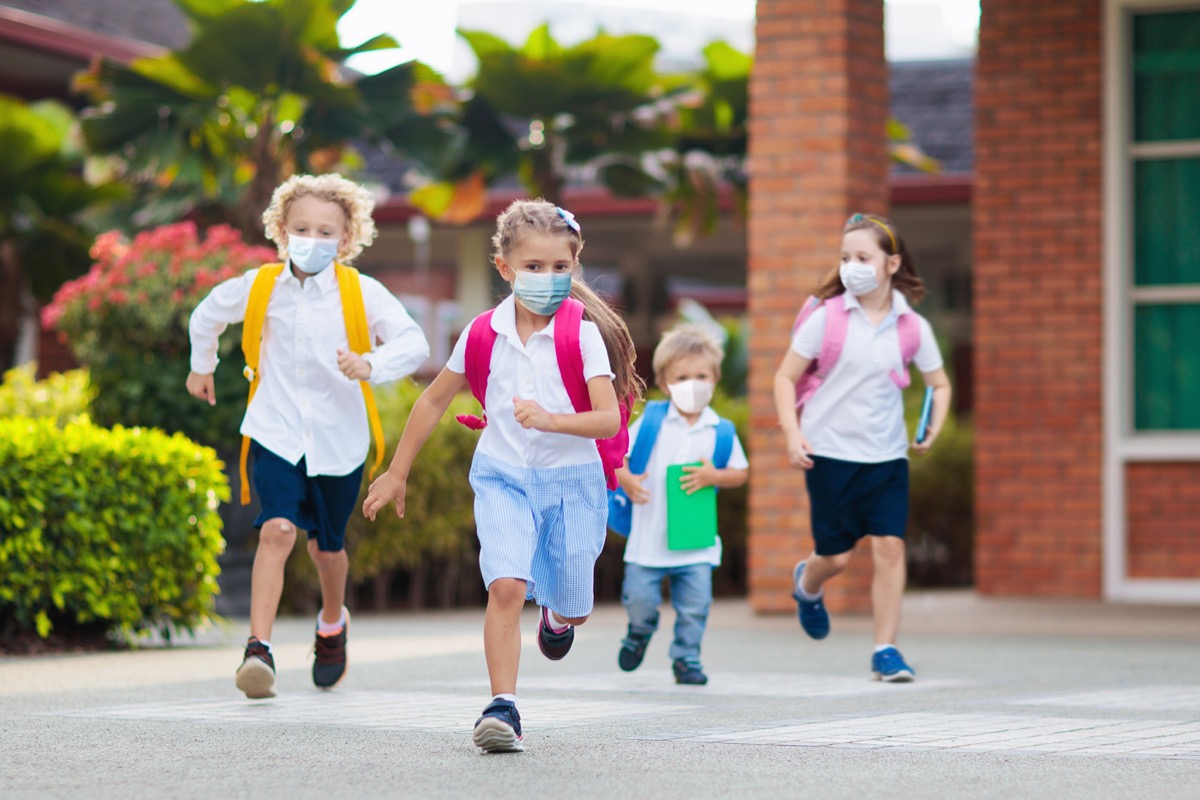While the Centers for Disease Control and Prevention’s (CDC) position on the matter has been cause for debate, the agency just released a comprehensive set of school guidelines designed to help administrators and local officials decide how best to reopen. And now, the CDC’s stance on the matter is clear. In a statement, CDC Director Robert Redfield, MD, said: “It is critically important for our public health to open schools this fall.” Opening schools amid this public health crisis is a remarkably challenging problem, for which there are no easy solutions. Closed schools and remote learning were disruptive on many levels last spring, particularly for working parents who rely on their children being in school during their working hours. “School closures have disrupted normal ways of life for children and parents, and they have had negative health consequences on our youth,” Redfield noted. “CDC is prepared to work with K-12 schools to safely reopen while protecting the most vulnerable.” The CDC school guidelines seem to argue that reopening schools may not be as risky as some think. “The best available evidence indicates that COVID-19 poses relatively low risks to school-aged children,” Redfield continued. “Children appear to be at lower risk for contracting COVID-19 compared to adults. To put this in perspective, according to the Centers for Disease Control and Prevention (CDC), as of July 17, 2020, the United States reported that children and adolescents under 18 years old account for under 7 percent of COVID-19 cases and less than 0.1 percent of COVID-19-related deaths.” He added that: “Scientific studies suggest that COVID-19 transmission among children in schools may be low. International studies that have assessed how readily COVID-19 spreads in schools also reveal low rates of transmission when community transmission is low.” On the other side of the reopening school debate, however, are civic leaders gravely concerned about the potentially crowded indoor setting of most classroom environments that could further spread the virus to students’ family members at home. A recently published study by the CDC looked at young people in South Korea and found that those between the ages of 10 and 19 are the most likely to spread the coronavirus in their households. Researchers looked at 5,700 people who reported coronavirus symptoms in the months before South Korea closed schools. They then tracked nearly 60,000 contacts from the original cases. Overall, the researchers said, “We detected COVID-19 in 11.8 percent of household contacts; rates were higher for contacts of children than adults.” However, the researchers found that the COVID rate among household contacts of children under 10 years old was the lowest of all age groups.ae0fcc31ae342fd3a1346ebb1f342fcb During a July 24 appearance on The Today Show, White House Coronavirus Task Force member Deborah Birx, MD, said: “We certainly know from other studies that children under 10 do get infected. … It’s just unclear how rapidly they spread the virus.” RELATED: For more up-to-date information, sign up for our daily newsletter. Much of these new guidelines go to great lengths to reaffirm the critical role that schools play in society. “Schools are an important part of the infrastructure of communities, as they provide safe, supportive learning environments for students, employ teachers and other staff, and enable parents, guardians, and caregivers to work,” the document makes clear. It also notes: “This guidance is intended, first and foremost, to protect the health, safety, and wellbeing of students, teachers, other school staff, their families, and communities.” But despite the encouraging tenor of the document, it ultimately leads decisions over school operations to be left to local community leaders. “Administrators should make decisions in collaboration with local health officials based on a number of factors, including the level of community transmission, whether cases are identified among students, teachers, or staff, what other indicators local public health officials are using to assess the status of COVID-19, and whether student, teacher, and staff cohorts are being implemented within the school,” the guidance reads. Reopening schools is a complicated issue with which every community is currently grappling. In an opinion piece for The Boston Globe, Harvard Global Health Institute (HGHI) Director Ashish Jha, MD, wrote: “We can open schools safely. Doing so means meeting two sets of conditions: The level of the coronavirus in the community must be low, and the school itself must be prepared.” And for more of how they can be, check out These Are the Only 2 Ways Schools Can Open Safely, Harvard Doctor Says
